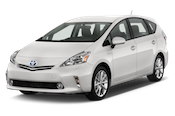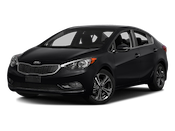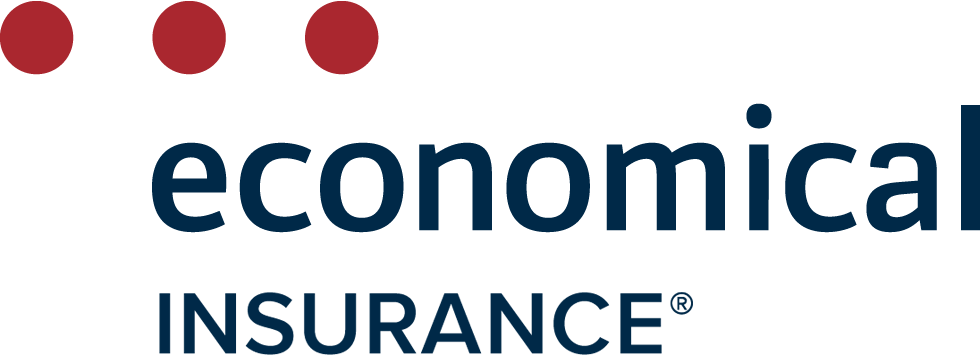
Cheap Hamilton Car Insurance Quotes
Hamilton drivers save $574* on average by comparing car insurance quotes on InsuranceHotline.com
Jump straight to...
- How does Hamilton auto insurance work?
- Mandatory & optional auto insurance coverages in Hamilton
- How much does the cheapest Hamilton car insurance cost?
- Where in Hamilton can I find the cheapest car insurance?
- Factors that influence your Hamilton auto insurance premium
- Tips to get cheap car insurance quotes in Hamilton
- Hamilton auto insurance frequently asked questions
How to get the cheapest Hamilton car insurance quote
Enter postal code
Begin by entering your postal code here!

Enter Driver Details
Tell us a little bit about your vehicle, driving & car insurance history.

Compare Your Quotes
Compare your car insurance quotes from more than 50 top insurance companies.

Pick Your Policy
Pick the insurance policy that's right for you to connect directly with the insurance professional of your choice.
We've got hundreds of 5 star reviews
2,247 reviews on TrustPilot. See some of the reviews here.
Fran
Curtis
Robert Clarkson
Vincenzina Perri
Keith
Dev
Georgia
Shirley Munro
Hoang Tran
Alnoor
Michael Benninger
Gene
D on
Robert
Remonia Thompson
Rich
Luis
How does Hamilton auto insurance work?
Auto insurance for Hamilton drivers is a mandatory requirement just like anywhere in Ontario. Hamilton auto insurance is regulated by the Financial Services Regulatory Authority of Ontario (FSRAO). The Financial Services Regulatory Authority monitors agents and businesses in Hamilton that sell automobile insurance to make sure they follow all legislative guidelines and rules. FSRA allows them to cover their operating cost, future claims from consumers and their own profit in the proposed rates, while making sure that the rates are reasonable for consumers.
Enforcing the law of the road
Vehicle owners, lessees, and drivers who do not carry valid auto insurance can be subject to a hefty fine ranging from $5,000 to $50,000 on the first instance. If you are found driving without valid auto insurance, you can have your driver's licence suspended and your vehicle seized on the second or subsequent instance. The Compulsory Automobile Insurance Act requires every owner or lessee of a motor vehicle to insure that vehicle if it is being operated on the road. The Financial Services Commission of Ontario (FSCO), along with the Ministry of Transportation and local police services, enforce that Act by prosecuting offences in court and by imposing fines on those violating the rules.
No-fault car insurance
In Ontario, drivers involved in an accident can each file claims to their respective auto insurance providers for getting coverage for the damage caused to their vehicle due to the collision or to cover cost of injury if any. This is called first-party claim or more commonly known as "no-fault" insurance. Unlike its name, no-fault insurance does not mean that the driver is not at fault. It only means that insurance companies will take their time to assess the damage and conclude who the at-fault driver is. Sometimes, only one driver is at-fault for an accident and the other is deemed to be not-at-fault. Other times, both drivers can be found to be at-fault to varying degrees.
Fault determination
If your insurance company determines you're at-fault partially or entirely, and you have collision coverage, you'll need to pay the deductible to repair the damage to your car before your insurance provider pays. An at-fault collision will remain on your driving record for up to six years, and it will affect your premium. That means your existing insurance provider may raise your premium at renewal unless you have an accident-forgiveness endorsement on your policy. If you do, your premium won’t go up, but if you have another collision, there will be no accident forgiveness for a second incident.
Since a fault determination goes on your driving record, other insurers will be aware of it, and they too may quote you a higher premium if you change companies. However, some insurers may be more forgiving than others, so it’s worthwhile to shop around for policies and premiums to find the lowest rate.
Mandatory & optional auto insurance coverages in Hamilton
| Insurance type | Mandatory overage | Optional/ Additional Coverage |
|---|---|---|
| Third-Party Liability | $200,000 minimum. Provides coverage in the event of a lawsuit resulting from an accident where you are at-fault. | Coverage can be increased to $500,000, $1 million, or $2 million, with up to $2 million limit. |
| Uninsured Automobile Insurance | Provides up to $200,000 in coverage if you are injured or killed by an uninsured driver, or if your vehicle is damaged as a result of a hit-and-run by an unidentified, uninsured motorist. | Family Protection Coverage is an optional coverage that includes additional coverage of up to $1 million in the case of a hit-and-run by an uninsured motorist. |
| Statutory Accident Benefits | Provides coverage if you are injured in an accident, regardless of who is at fault. Covers medical expenses that aren’t covered by OHIP. | Coverage limits can be increased. |
| Direct Compensation-Property Damage (DC-PD) | Optional | DCPD is included in all standard insurance policies, but Ontario drivers can apply to remove it. DCPD pays to repair or replace your car if you're in a collision where the other driver is at fault. You lose this coverage by removing DCPD, as well as your ability to sue the other driver for repairs. |
| Collision Coverage (Also Upset Coverage) | Optional | Covers the costs of repairing or replacing your vehicle following a collision with another vehicle, an object, or property. |
| Comprehensive Coverage | Optional | Covers damages caused by named perils identified under the Specified Perils coverage, as well as losses from other perils like falling or flying objects, theft, fire, hail, windstorms, missiles, and vandalism. |
| Specified Perils Coverage | Optional | Covers damages caused by named perils such as theft, attempted theft, explosions, natural disasters like fire, lightning, windstorm, hail, rising water, earthquakes, and other perils specified in your policy. Specified perils do not cover damages due to vandalism, breakage of glass, etc. |
| All-Perils Coverage | Optional | Combines collision/upset and comprehensive coverage. Also, provides additional protection if a household member or an employee steals your vehicle. |
| OPCF 20: Coverage for Transportation Replacement | Optional | Covers the cost of your transportation replacement and rental car insurance if you were to get into a car accident or if your vehicle is stolen. |
| OPCF 27: Liability for Damage to Non-Owned Automobile(s) | Optional | Covers if you damage a borrowed or rental vehicle. The coverage limit is usually around $25,000 to $50,000. |
| OPCF 39: Accident Waiver/Forgiveness | Optional | Protect your premium from rising when you have your first at-fault accident. |
| OPCF 16: Suspension of coverage | Optional | This allows you to suspend your insurance coverage for 30 days or more during periods when you aren't using the car. |
| OPCF 43: Waiver of depreciation | Optional | Ensures your insurance company won't factor in depreciation when settling a claim; you will receive the amount you initially paid for the car. |
| OPCF 44R: Family protection coverage | Optional | Ensures your costs are covered if you and your family are involved in an accident with a driver with less liability insurance than you. This endorsement will cover the remainder. |
| OPCF 13C: Limited glass | Optional | For a lower premium, you can limit or exclude any coverage for glass damage that might've been in your policy. |
| OPCF 40: Fire and theft deductible | Optional | Adds a deductible (an amount you must pay before your insurance company chips in funds) for a theft or fire damage claim. |
Cheap car insurance quotes unlocked by real Hamilton drivers
Below are real quotes that were recently completed on InsuranceHotline.com by drivers living in Hamilton, Ontario

Male, age 54, Hamilton, ON
Driving:2015 Ford F150
Current Rate: $2,567
Lowest Rate Available: $2,282
Insurance Company: RBC Insurance
Annual Savings: $285

Female, age 25, Hamilton, ON
Driving: 2010 Honda Civic 4DR
Current Rate: $2,986
Lowest Rate Available: $2,476
Insurance Company: Economical Insurance
Annual Savings: $510

Male, age 35, Hamilton, ON
Driving: 2016 Ford Mustang
Current Rate: $2,647
Lowest Rate Available: $2,192
Insurance Company: ING Insurance
Annual Savings: $455

Female, age 40, Hamilton, ON
Driving: 2013 Toyota Prius
Current Rate: $2,291
Lowest Rate Available: $1,816
Insurance Company: Chieftain Insurance
Annual Savings: $475

Female, Age 31, Hamilton, ON
Driving: 2016 Kia Forte ex 4DR
Current Rate: $2,279
Lowest Rate Available: $1,691
Insurance Company: PC Financial Insurance Brokers
Savings: $588

Male, Age 41, Hamilton, ON
Driving: 2016 BMW 550
Current Rate: $2,475
Lowest Rate Available: $1,894
Insurance Company: Johnson
Savings: $581
Compare Hamilton car insurance premium against other Ontario regions
Auto insurance rates vary from driver to driver. Your driving record and history, gender, the area code or neighbourhood that you live in, crime rates in the area, the type, make, and model of your car are some factors that insurers consider when setting your insurance rates.
Along with your personal information (like age and postal code), market conditions also impact auto insurance rates. High incidents of vehicle thefts, repair parts shortage and long delays in vehicle repairs, and inflation will drive up insurance costs, and insurers will cut their loss by raising insurance prices.
Hamilton auto quotes tend to have a higher distribution for lower range of premiums, when compared with other big cities of Ontario. That means, Hamilton residents receive lower-cost car insurance quotes when compared to other areas in the Greater Toronto Area (GTA). From among the 726 Hamilton auto insurance quotes provided during the first quarter of 2024, nearly 43% of them have a premium below $2,000. And only 39% of auto insurance quotes have a premium over $2,000.
FSRA regulates and oversees rate changes, and the FSRA’s latest data on average insurance premium rates in the province follow similar patters as that of our InsuranceHotline.com quoter data.
According to FSRA data, other urban regions in Ontario including Hamilton, have an average car insurance premium of $1,711. One reason why Hamilton drivers may be seeing lower car insurance rates is because of the rural versus urban divide. Densely populated urban centres like the GTA tend to have higher insurance rates compared to suburban areas. There are also fewer risks that insurers must account for, like lower rates of theft, vandalism, collisions, crime and lower claim frequencies.
| Region | Average car insurance premium Q4 2023 | |
|---|---|---|
| Ontario | $1,796 | |
| GTA | $2,391 | |
| Other Urban | $1,711 | |
| Rural | $1,404 |
How much does the cheapest Hamilton car insurance cost?
According to InsuranceHotline.com internal data, the cheapest premium quoted for car insurance in Hamilton for the first quarter of 2024 is $249 per year, for a 62-year-old male driving a 2005 Chrysler Town & Country and residing in Hamilton Township.
Where in Hamilton has the cheapest car insurance?
The neighbourhood or area that you live in also plays a role in determining auto insurance rates. Now that we know that Hamilton has some of the lowest auto insurance rates in the province, let’s dig deeper into which specific areas have lower auto insurance rates.
The cheapest auto insurance premium quoted on InsuranceHotline.com within the Hamilton Township was in the K0L region in Hamilton, with an annual premium of $249, obtained by a 62-year-old male, driving a 2005 Chrysler Town & Country car.
We also looked at other demographics, like the gender and age of the driver, and the make and model of the car in the Hamilton region and here’s the cheapest auto insurance premiums that we found:
For a 54-year-old female driving a 2005 Nissan X-Trail luxury, four-wheel drive and residing in K0L region of Hamilton Township: $301
For a 70-year-old male driving a 2011 Volkswagen Jetta 2.0, four-wheel drive and residing in the K0L region of Hamilton Township: $340
Age, gender, and marital status
A driver’s age and gender have a substantial impact on the premium he or she pays to the auto insurance provider. Male drivers in the age group of 16-21 are perceived to be an elevated risk to insure due to driving patterns and thus, pay the highest auto insurance premium. Auto insurance premiums decrease in the mid-twenties and the price gap between male and female drivers fades out by the age of 30. Thanks to significant driving experience, rates tend to be the lowest for drivers in their 50s and 60s. Other demographic examples that influence auto insurance premiums are that married drivers are perceived as being at a lower risk to insure and in Ontario, non-binary drivers are offered female rates.
Vehicle type
Base model cars tend to have lower insurance premiums than luxury ones. The reason being that car parts for basic models are cheaper to repair and replace if they’re damaged in a collision. Luxury, high-end, or classic cars are more expensive to insure because they may require specialized technicians or its difficult to find replacement parts. As EVs use Original Equipment Manufacturer (OEM) parts, high repair costs and long waiting times are a problem that we’re increasingly seeing. When shopping for a new car, it’s important to factor in insurance costs for different makes and models.
Neighbourhood
As illustrated above, your postal code is a significant factor in determining your insurance premium. Insurance companies group drivers by geographic location and examine claims activity within those boundaries. A neighbourhood that has a high incidence of theft, vandalism, or collisions will have higher premiums than that of another neighbourhood that has a lower incidence of collisions. More claims in your neighbourhood also means higher premiums, while fewer claims could help decrease your premium over time.
Driving history
Any convictions under Ontario’s Highway Traffic Act will affect your premiums. Speeding, driving under the influence of alcohol, and driving without auto insurance are all serious convictions and will stay on your insurance record for three years, driving up your auto insurance premiums. Apart from major driving convictions, it’s also important that you practice safe driving habits, and try your best to avoid any infractions, tickets, and penalties.
Your insurance history
If you have many claims on your insurance history, you are likely to be paying higher than others. Traffic convictions have a large impact on your insurance history. Also, failure to pay your auto insurance premiums on time can damage your credibility with your insurer and lead to a massive increase in your premium. It can also result in the cancellation of your policy, which will make finding cheap insurance rates with other providers impossible.
Optional coverages in your policy
Besides the mandatory auto insurance coverage — liability, accident, uninsured driver, and property damage — any additional coverage you choose to enhance your policy will raise your premium.
Your policy's deductibles
A deductible is the amount you agree to pay before your insurance company kicks in with the benefit detailed in your policy. Insurers will lower your premium if you increase the deductible since you’re demonstrating that you’re willing to shoulder a greater portion of the cost.
The company’s own insurance claims history
Insurance companies must ensure they have enough in their coffers to meet their obligations to policyholders in the present and future. Insurance companies are one of the most fiscally conservative entities in the financial marketplace. If insurers observe that they’re paying out more claims than what they’re taking in from payments (tracked using a metric known as the ‘combined ratio’), they will need to increase premiums for their customers.
Shop around for Hamilton auto insurance quotes from the comfort of your couch
Have you ever noticed how the insurance quotes that companies offer can vary by hundreds, if not thousands of dollars? For many Hamilton drivers, this range offers an opportunity for you to save big on your car insurance.
The key is to find the insurance company that has the lowest rate available. Traditionally, this would mean phoning or emailing all the Hamilton car insurance companies you could think of individually to obtain each quote, which is no doubt a time-consuming and monotonous process. We know that's not the most efficient way to get cheaper car insurance in Hamilton.
InsuranceHotline.com exists to solve this problem. By providing you with instant online car insurance quotes, you can compare rates from a broad cross-section of the available insurance companies in Hamilton. It's our way of helping you and your family save money and time. Get a quote that's less than the average market rate.
Plus, it's easy!Complete a free quote to compare todayand see for yourself how simple it is to save.
*Shoppers in Hamilton who obtained a quote on InsuranceHotline.com from January to December 2023 saved an average of $574 per year. The average savings represent the difference between the shoppers’ average lowest quoted premium and the average of the second and third-lowest quoted premiums generated by InsuranceHotline.com.
Tips on getting the cheapest car insurance in Hamilton
Saving on car insurance is easier than you think. Here’s 10 tips to ensure you’re getting the cheapest Hamilton car insurance rate:
Shop around
InsuranceHotline.com shoppers in Hamilton saved an average of $574.90* on their car insurance premiums by comparing 50+ quotes from leading insurance companies in Canada.
Increase deductibles
If there is some wiggle room in your budget, increase your deductibles from $500 to $1,000 to save 5 to 10% on your Hamilton car insurance.
Lump sum payment
Paying your auto insurance premiums annually instead of monthly payments can help you get cheap car insurance in Hamilton. Your insurance company may choose to reduce the administrative fees associated with processing monthly payments.
Bundle all policies
You can save anywhere from 5 to 15% off each policy when you bundle your home and car insurance under the same insurance provider. This means you’re getting not only the cheapest car insurance options for Hamilton, but also the cheapest quote for home insurance in Hamilton too. Simply select the bundling option when completing your home or auto quote to unlock these savings.
Insure all vehicles
Save 10 to 20% when you insure all your vehicles under the same policy.
Change tires seasonally
Getting your vehicle tires changed when winter arrives can get you a winter tire discount, saving you about 5% on your auto insurance policy.
Compare annually
Most auto insurance policies are renewed every year. Renewal time is the best time to save money by taking a closer look at the coverages you no longer require or switching insurance companies to get lower auto insurance rates. Plus, you won’t have to pay a penalty for terminating your insurance policy early.
Use a telematics device
A telematics device helps insurers monitor your driving habits, like how often you speed or brake. By enrolling in a Usage-based insurance program and practicing safe driving habits, you can be rewarded with a reduced insurance rate – sometimes as much as 25% off the standard premium.
Ask about discounts
Don’t be shy to ask about additional discounts you might be eligible for, including good student or professional association discounts.
Driver’s education
Are you a new driver, or is your child ready to take the wheel? Consider an accredited driver’s education course to save on Hamilton car insurance.
Hamilton auto insurance frequently asked questions
Find an answer here to every question on your mind about Hamilton auto insurance.
Why am I getting different car insurance rates from different insurance companies?
No two auto insurance companies will offer you the same rate.
Insurance companies charge different rates for the same coverage, which means you can save hundreds of dollars by shopping around. A few extra bucks in saving hurt no one!
How can I find the cheapest car insurance in Hamilton?
The best way to find the cheapest car insurance for your needs is by shopping around. It is in your best interest to speak with different insurance providers to get the best rate as per your requirements. InsuranceHotline.com helps you find the lowest price on your auto insurance available through its network of more than 30 insurance brokers and agents in one simple step.
Which Hamilton insurance company offers cheapest car insurance?
It is hard to point at one company and say it offers the cheapest insurance rate. No two auto insurance companies will offer you the same rate. The premium also depends on various factors such as your driving history, neighbourhood, among others. It is in your best interest to shop around and identify an insurance provider who offers you the best rate for your needs. InsuranceHotline.com helps you find the lowest price on your auto insurance available through its network of more than 30 insurance brokers and agents in one simple step.
Is it cheaper to buy auto insurance directly with insurance company than brokers?
A broker sells insurance, but they're not tied to an insurance company. A broker can help you shop around by getting quotes from multiple companies, but they charge fees for their services, which could diminish any savings you may find by working with them. They earn commission from insurance companies; however, the law prevents brokers from recommending one insurance company over another if it's not in your best interest.
An insurance agent, on the other hand, is an employee of an insurance company and they can only show you the products from the company that employs them. The upside is that agents always have the most up-to-date information on the company's latest products and discounts. Agents also work on commission, but unlike brokers who must work with insurance companies to complete a policy purchase, insurance agents have the power to complete the sale on their own.
The decision rests on you, and as mentioned above, it is better to shop around to save some extra bucks.












